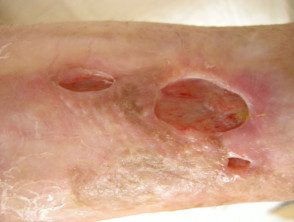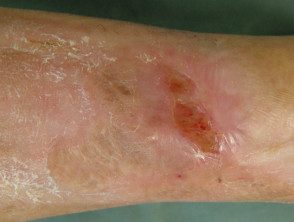What is hyperbaric oxygen therapy?
Hyperbaric oxygen therapy is a treatment in which a patient breathes pure oxygen while subjected to elevated levels of atmospheric pressure. Is a primary or attached treatment for carbon monoxide poisoning, severe decompression sickness, arterial gas embolism, and chronic wounds [1].
There are more than 1,200 hyperbaric facilities in the United States, but hyperbaric oxygen is less widely used elsewhere. [two].
What are the indications for hyperbaric oxygen therapy?
Hyperbaric oxygen therapy is mainly used to treat patients with:
- Carbon monoxide poisoning
- Decompression sickness
- Arterial gas embolism
- Chronic wounds [1,3].
Carbon monoxide poisoning
Carbon monoxide poisoning can occur from inhaling flue gases, especially in an enclosed space. Occupations at risk include firefighters, miners, and people exposed to an indoor coal or gas fire with inadequate ventilation. [4.5]. Carbon monoxide poisoning is also cyanide-induced.
Decompression sickness
Decompression sickness, more commonly known as 'the curves', is a condition where nitrogen dissolved in the blood and tissues bubbles during a movement from high to low pressure, causing muscle and joint pain. It most commonly occurs in divers or deep-sea divers who breathe compressed air. It also occurs at high altitude or during deep pressure air travel. [6].
Arterial gas embolism
An arterial gas embolism is when an air bubble occurs in an artery, which can block blood vessels. It occurs during diving and after an unexpected rapid depressurization of an airplane or spacecraft at more than 5,500 m altitude. [7]. Air can also be introduced directly into an individual's circulation during the central venous catheter cardiac, neurological, and otorhinolaryngological (ear, nose, and throat) placement and surgery [1]. People who have a patent oval hole (a hole in the heart that normally closes after birth) are at increased risk for arterial gas embolism. [one].
Poor wound healing
Poor wound healing may be due to local, regional, systemicor various causes. Can occur in people with tissue ischemiaactive bacterial skin infection, arterial and venous insufficiency, diabetes mellitus, radiation exposure, smoking and use of vasoconstrictor drugs [8].
A chronic ulcer before and after hyperbaric oxygen therapy.

Chronic ulcer before hyperbaric oxygen.

Chronic ulcer after hyperbaric oxygen.
Other uses for hyperbaric oxygen therapy
Hyperbaric oxygen is sometimes used to treat a wide range of medical conditions, including:
- Acute crush injury and other forms of traumatic ischemia
- Radiation necrosis of Soft fabric and bone
- Necrotizing Soft tissue infection
- Refractory osteomyelitis
- Compromised skin graft or flap
- Serious anemia
-
Actinomycotic brain abscess [2.9-11].
Hyperbaric oxygen can improve healing after acute traumatic crush injury and compartment syndrome (a build-up of pressure in the muscles), resulting in fewer skin flaps, grafts, and amputations [12,13]. Conversely, there is insufficient evidence to support the use of hyperbaric oxygen for burns. [14,15].
The use of hyperbaric oxygen for soft tissue radionecrosis (tissue degeneration due to radiation exposure) and osteoradionecrosis (bone breakdown due to radiation exposure) is controversial [16–20]. Current guidelines for prevention and treatment recommend 20 to 30 90-minute preoperative sessions of hyperbaric oxygen at 2.4 atmospheres (atm) followed by 10 postoperative sessions [17].
Hyperbaric oxygen is used as a complementary treatment for aggressive soft tissue infections such as clostridial myonecrosis (gas gangrene), necrotizing fasciitis and Fournier's gangrene [21–27]. It should start early, with 2-3 daily 90-minute sessions at 3 atm [17]. It is not clear whether hyperbaric oxygen therapy is useful for cutaneous soft tissue and rhinocerebral mucormycosis (zygomycosis), actinomycotic brain abscesses, or refractory osteomyelitis [1].
Hyperbaric oxygen is used as a complementary therapy to treat poor scarring. ulcers and skin grafts and to promote wound healing, although there is limited evidence to support their routine use [28–30]. Patients requiring skin grafts or reconstructive flaps in areas with compromised blood flow, prior radiotherapy, or previous graft failure may benefit from prophylactic treatment.
Many other diseases have been treated with hyperbaric oxygen with no evidence to support the treatment. More research is required to confirm any benefits and justify its substantial costs and potential risks. [1.31].
How does hyperbaric oxygen therapy work?
Hyperbaric oxygen therapy is generally performed as an outpatient procedure and does not require hospitalization. The details of which will depend on the installation of hyperbaric oxygen and the indication for treatment.
Hyperbaric oxygen therapy involves breathing pure 100% oxygen in a single-seat chamber, which treats one patient at a time, or in a multiplace chamber, which treats two or more patients at once.
Pressures of 2.5 to 3.0 times normal atmospheric pressure are generally recommended for both chamber types [32].
- The treatment usually lasts 120 minutes, with a range of 45 to 300 minutes. [1.31].
- Acute cases may require only one or two sessions.
- Patients with residual deficits from decompression sickness should receive repeated treatments, which can take several days to achieve a therapeutic effect [1].
- Chronic ulcers may require 30 or more treatments. [1.31].
Single-seat camera
The single-seat camera is designed for one person and is suitable for the treatment of a chronic medical condition in a stable patient. [9]. The patient lies on a table that slides into a clear plastic tube, similar to a magnetic resonance image (Magnetic resonance) machine [3].
Multiplace camera
The multiplace camera is designed for two or more people and allows close monitoring of a critically ill patient [1,31]. The large chamber resembles a hospital room, and the patient can sit or lie down. Oxygen is received through a light, transparent mask or hood [3.31].
What is the mechanism of action of hyperbaric oxygen?
The mechanism of action depends on the condition to be treated. See below for more details.
Carbon monoxide poisoning
Carbon monoxide has 200 to 250 times greater affinity for hemoglobin than oxygen, reducing the oxygen transport capacity of the blood [1]. The normal half-life of carboxyhemoglobin is 4 to 6 hours; hyperbaric oxygen therapy reduces its half-life to 15–30 minutes [33,34].
Decompression sickness
According to Boyle's law (which was related to the relationship between gas concentration, volume, and pressure), the volume of the nitrogen bubbles decreases by approximately two-thirds at 3.0 atm. Hyperbaric oxygen therapy thus reduces the size of the nitrogen gas bubbles and replaces inert nitrogen with oxygen [9]. The residual nitrogen is metabolized in the tissues.
Chronic wounds
Hyperbaric oxygen therapy achieves its therapeutic effect by increasing the oxygen supplied to the injured tissue.
The concentration of dissolved oxygen in plasma at sea level it is 0.3 mL / dL. Applying the principles of Henry's law (i.e. the weight of the gas dissolved by a liquid is proportional to the pressure of the gas on the liquid), the hyperbaric oxygen administered at 3.0 atm results in a plasma dissolved oxygen concentration of 6 mL / dL [1]. High-concentration oxygen delivery to injured tissues can restore tissue function, stimulate healing, and resist infection. [31].
In vitro studies have shown that reactive oxygen and nitrogen species are the key mediators of bactericide host response in acute and chronic injuries, ischemia and inflammation [35–37].
Local hyperoxia (an excessive concentration of oxygen) induces the following effects:
- Stimulates vasoconstriction (constriction of the blood vessels)
- Reduces vasogenic edema [35]
- Reduces White blood cell influx as a result of reperfusion injury (blood supply returns to tissue after lack of oxygen) [36]
- Increases fibroblasts proliferation
- Increases angiogenesis [12,17]
- Increases neutrophils bactericidal activity, which limits the production of clostridial esotoxin and exotoxin, killing anaerobes such as Clostridium perfringensand inhibiting the growth of other bacteria pathogens [17.38–40].
Which are the contraindications with hyperbaric oxygen therapy?
Untreated pneumothorax is an absolute contraindication to hyperbaric oxygen therapy [1]. Relative contraindications include:
- Obstructive pulmonary disease
- Asymptomatic pulmonary blisters or bullas
- Upper respiratory or breast infection
- Recent ear or thoracic surgery
- Ear trauma
- Out of control fever [1,4].
What are the side effects and risks of hyperbaric oxygen therapy?
The side effects of hyperbaric oxygen therapy may include:
- A temporary feeling of fullness in the ears that is relieved by yawning or swallowing [31]
- Transient dizziness or hunger [3]
- Claustrophobia
- Fatigue
- Headaches [1,4].
Complications of hyperbaric oxygen therapy
The most common complication of hyperbaric oxygen therapy is barotrauma of the middle ear (pressure related trauma), which occurs with a incidence of approximately 2%, and may infrequently cause effusions of the middle ear and rupture of the tympanic membrane [41]. Pressure-related injury to the middle ear can be prevented by self-inflation techniques and the placement of tympanostomy tubes to draw fluid and reintroduce air into the middle ear tubes. [41].
The second most common complication is sinus barotrauma, which is generally seen in patients with upper respiratory tract infections or allergic rhinitis. [one]. The risk can be minimized with nasal decongestants, steroids, or antihistamines before hyperbaric oxygen. [41].
Rare complications can include:
- Pulmonary barotrauma and toxicity [1,9]
- Decompression sickness in patients inhaling nitrogen-containing compressed air [1,4]
- Lens toxicity and temporal myopia (myopia) [41]
- Seizures [1,4,17,42]
- Drug interactions [1].
Cautions
Pure oxygen is a serious fire risk.
Possible fire hazards, such as lighters, battery-powered devices, and petroleum products. hair and skin care products should be removed before the procedure [31].

